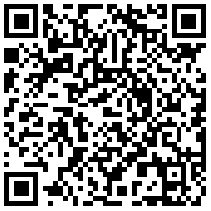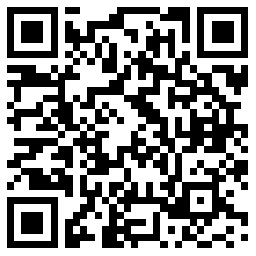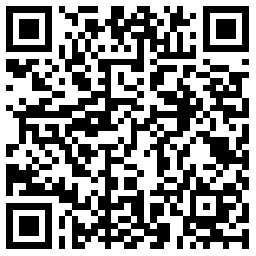Therapeutic Effect of Infliximab in the Treatment of Severe/Refractory Intestinal Behcet's Disease: A Single-center Retrospective Study
-
摘要:目的 探讨英夫利西单克隆抗体(infliximab, IFX)治疗重症/难治性肠型白塞病(Behcet's disease, BD)的疗效及安全性。方法 回顾性分析2012年9月至2018年11月, 北京协和医院风湿免疫科收治的因前期治疗无效而联合应用IFX的重症/难治性肠型BD患者临床资料, 包括临床表现、内镜下表现及病理、影像学检查、IFX联合治疗前后用药、治疗反应及预后。分析并比较联合用药前后症状改善及内镜下溃疡愈合情况, 采用配对t检验比较治疗前后红细胞沉降率、C反应蛋白、肠型BD疾病活动指数(disease activity index for intestinal BD, DAIBD)及糖皮质激素剂量的变化。结果 12例BD患者纳入本研究, 其中男性10例, 女性2例, 平均年龄(29.5±10.5)岁, 均为活动性肠道受累BD, 确诊BD到开始IFX联合治疗的中位时间为27.0(4.3, 109.5)个月。12例患者均存在腹痛、消化道溃疡, 其中8例腹泻, 11例并发消化道出血, 4例肠梗阻, 3例肠穿孔。联合应用IFX后, 12例患者症状均得到改善, 溃疡渐愈合, 消化道出血好转, 1例穿孔患者同时行手术治疗, 1例患者缓解后出现结肠狭窄择期行梗阻肠段切除术。IFX联合治疗后, 红细胞沉降率[4.0(2.0, 6.8)mm/h比28.5(10.3, 52.3)mm/h, P<0.01]、C反应蛋白[0.6(0.5, 1.7)mg/dl比26.8(9.1, 47.1)mg/dl, P<0.01]、DAIBD(37.5±27.3比126.7±49.0, P<0.01)和糖皮质激素剂量[13.8(1.9, 16.9)mg/d比40.0(16.3, 56.3)mg/d, P<0.01]较治疗前显著下降。免疫抑制剂种类减少或不变。未观察到严重感染或药物不良反应。结论 IFX联合糖皮质激素/免疫抑制剂对治疗严重/难治性肠BD安全、有效且耐受性良好。Abstract:Objective The aim of this study was to explore the efficacy and safety of infliximab (IFX) for severe/refractory intestinal Behcet's disease (BD).Methods The clinical data of intestinal BD patientstreated with IFX from September 2012 to November 2018 in Peking Union Medical College Hospital were retrospectively collected and analyzed, including clinical manifestations, endoscopic manifestations and pathology, imaging examinations, medication before and after IFX treatment, treatment response and prognosis. The clinical symptoms and endoscopic ulcer healing before and after treatment were analyzed and compared. Meanwhile, the changes of erythrocyte sedimentation rate (ESR), C-reactive protein (CRP), disease activity index for intestinal BD (DAIBD), and the dosage of glucocorticoid before and after IFX treatment were compared by paired t-test.Results Twelve patients (10 males and 2 females) were enrolled, with a mean age of (29.5±10.5) years old; all were active with intestinal BD. The median time between diagnosis of BD and initiation of IFX therapy was 27.0(4.3, 109.5)months. All patients had abdominal pain and gastrointestinal ulcer, in which 8 cases with diarrhea, 11 with gastrointestinal bleeding, 4 with intestinal obstruction, and 3 with intestinal perforation were documented. After using IFX, the symptoms of all the patients were improved; the ulcers gradually healed; the gastrointestinal bleeding stopped. One patient with intestinal perforation was conducted surgery at the same time, and another with colonic stenosis after remission received ileus segmentectomy. The ESR level[4.0(2.0, 6.8)mm/h vs. 28.5(10.3, 52.3)mm/h, P < 0.01], CRP level[0.6(0.5, 1.7)mg/dl vs. 26.8(9.1, 47.1)mg/dl, P < 0.01], DAIBD(37.5±27.3 vs. 126.7±49.0, P < 0.01], and the dosage of glucocorticoid[13.8(1.9, 16.9)mg/d vs. 40.0(16.3, 56.3)mg/d, P < 0.01] were significantly decreased. Furthermore, the types of immunosuppressants being used were gradually decreased or unchanged. No serious infectious and adverse events were observed.Conclusion IFX, in combination with corticosteroids and immunosuppressants, is safe, effective, and well tolerated for severe/refractory intestinal BD.
-
Keywords:
- intestinal Behcet's disease /
- infliximab /
- efficacy /
- safety
-
肾素-血管紧张素系统(renin-angiotensin system, RAS)是人体内十分重要的体液调节系统,RAS的过度激活与多种病理过程相关。在众多的血管紧张素家族成员中,血管紧张素Ⅱ(angiotensin Ⅱ)的作用最为重要。血管紧张素Ⅱ不仅在血压调节、水盐平衡的维持方面发挥重要作用,同时还可促进炎症反应、细胞增殖,参与高血压、冠状动脉粥样硬化性心脏病(冠心病)、心力衰竭等多种疾病的病理过程[1]。既往研究表明冠心病患者血浆中血管紧张素Ⅱ水平显著升高[2],且血管紧张素Ⅱ水平与急性冠状动脉综合征患者短期预后存在相关性[3-4],但血管紧张素Ⅱ与行择期经皮冠状动脉介入治疗(percutaneous coronary intervention, PCI)患者的院内预后情况是否具有相关性目前尚不明确。本研究旨在探讨行择期PCI患者血管紧张素Ⅱ水平与其院内预后的关系。
对象和方法
研究对象
连续纳入2012年7月至2013年7月在北京协和医院心内科住院行冠状动脉造影明确诊断为冠心病而需行择期PCI的患者645例。冠心病定义为冠状动脉造影时左主干、前降支、回旋支、右冠状动脉或主要分支血管的直径狭窄程度>50%。排除心肌炎、心肌病、明确细菌感染、恶性肿瘤、自身免疫性疾病、肾功能不全(血清肌酐>132.6 μmol/L)和急诊PCI或病情高危(不稳定性心绞痛和非ST抬高型心肌梗死)需行早期PCI者。
研究方法
通过系统性病史询问采集患者相关病史,包括既往有无冠心病、高血压病、糖尿病、肝脏疾病、肾脏疾病、吸烟饮酒史、早发冠心病家族史及入院前血管紧张素转换酶抑制剂(angiotensin-converting enzyme inhibitor,ACEI)和血管紧张素Ⅱ受体阻滞剂(angiotensin Ⅱ receptor blocker,ARB)使用情况等,并记录患者入院体重指数及次日清晨6时静息状态下空腹静脉血的肾功能、血脂水平。所有患者均行超声心动图评估左室射血分数。高血压病病史定义为既往已诊断高血压病,或正在使用降压药物,或入院收缩压≥140 mm Hg(1 mm Hg=0.133 kPa)和(或)舒张压≥90 mm Hg[5];糖尿病病史定义为既往已诊断糖尿病,或正在使用降糖药物,或空腹血糖>7.0 mmol/L,或葡萄糖负荷后2 h血糖>11.1 mmol/L[6];吸烟史定义为连续吸烟至少1年,每日至少1支[7];早发冠心病家族史定义为患者一级亲属中男性65岁前、女性55岁前患冠心病[8]。冠状动脉造影采用Judkins方法,左冠脉至少投照4个体位,右冠脉至少投照2个体位,必要时加其他体位。结果判定标准为主要冠脉及其主要分支直径狭窄程度≥50%视为病变血管,分为1、2、3支病变。累及左主干以同时累及左前降支和左回旋支计算,对角支、钝缘支等归于所属的主要冠脉来计算。
所有受检者于行冠状动脉造影前采集动脉血标本,加入EDTA抗凝,4 ℃低温分离血浆,采用酶联免疫吸附法(人血管紧张素Ⅱ ELISA试剂盒,RapidBio Lab.公司,美国)测定血浆中血管紧张素Ⅱ的浓度,严格按照说明书操作。所有受检者均签署知情同意书。本研究经北京协和医院伦理委员会批准。
院内主要心血管不良事件定义:全因死亡、非致死性心肌梗死(包括PCI围术期心肌梗死)、新发非致死性卒中(缺血性及出血性)、非计划再次血管重建。其中PCI围术期心肌梗死定义为:PCI术后心肌肌钙蛋白水平较99%正常上限值升高5倍以上,如果基线值原本已升高,则心肌肌钙蛋白需至少再升高20%,并有下降趋势[9]。
统计学处理
采用SPSS 19.0软件进行统计学处理。所有数据进行正态性检验,符合正态分布的定量资料采用均数±标准差表示,非正态分布的定量资料采用中位数(四分位数间距)表示,定性资料采用率表示。组间比较时正态分布的定量资料采用独立样本t检验,非正态分布的定量资料采用非参数检验,定性资料采用χ2检验。采用多因素Logistic回归分析院内心血管不良事件的独立预测因素并计算相应的比值比(odds ratio,OR)及其95%置信区间(confidence interval,CI)。P<0.05为差异具有统计学意义。
结果
患者基本临床资料
在纳入的645例患者中,男性468例,女性177例,平均年龄(61.77±0.39)岁。发生院内主要心血管不良事件的患者68例(10.54%),其中死亡2例、非致死性心肌梗死62例、新发缺血性非致死性卒中1例、再次血管重建3例。发生院内主要心血管不良事件患者的高密度脂蛋白胆固醇水平显著低于无不良事件患者(P=0.036),三支及以上冠状动脉病变发生率显著高于无不良事件患者(P<0.01);而两组在年龄、性别、高血压病史、糖尿病病史、吸烟史、体重指数、总胆固醇水平、甘油三酯水平、低密度脂蛋白胆固醇水平、左室射血分数、入院前ACEI/ARB使用情况等方面差异均无统计学意义(表 1)。
表 1 患者基本临床资料及血管紧张素Ⅱ水平临床资料 无院内心血管不良事件(n=577) 有院内心血管不良事件(n=68) 统计量 P值 男性[例(%)] 418(72.40) 50(73.50) χ2= 0.036 0.849 年龄(x±s, 岁) 61.53±0.41 63.76±1.16 t=-1.760 0.073 高血压病史[例(%)] 435(72.70) 46(67.60) χ2= 1.115 0.291 糖尿病病史[例(%)] 240(41.60) 26(38.20) χ2= 0.283 0.595 吸烟史[例(%)] 343(59.40) 42(61.80) χ2= 0.136 0.712 早发冠心病家族史[例(%)] 102(17.70) 15(22.10) χ2= 0.786 0.375 体重指数[M(Q1, Q3), kg/m2] 25.39(23.25, 27.80) 26.00(23.70, 28.20) Z=-1.159 0.247 总胆固醇(x±s, mmol/L) 4.19±0.82 3.88±0.12 t= 1.297 0.195 甘油三酯[M(Q1, Q3), mmol/L] 1.39 (1.02, 2.14) 1.50 (1.09, 1.88) Z=-0.304 0.761 低密度脂蛋白胆固醇(x±s, mmol/L) 2.21±0.40 2.14±0.10 t= 0.518 0.605 高密度脂蛋白胆固醇[M(Q1, Q3), mmol/L] 1.02 (0.85, 1.24) 0.93 (0.80, 1.21) Z=-2.093 0.036 左室射血分数(x±s, %) 66.08±0.32 68.12±0.74 t=-2.068 0.157 冠脉三支及以上病变[例(%)] 253 (43.80) 47(69.10) χ2=19.052 0.000 入院前ACEI/ARB使用[例(%)] 219(38.00) 25(36.80) χ2= 0.037 0.848 血管紧张素Ⅱ[M(Q1, Q3), ng/L] 35.66(22.84, 48.22) 41.42(28.73, 57.07) Z=-2.606 0.009 ACEI:血管紧张素转换酶抑制剂;ARB:血管紧张素Ⅱ受体阻滞剂 有无院内心血管不良事件患者血浆血管紧张素Ⅱ水平比较
发生院内主要心血管不良事件的患者血管紧张素Ⅱ水平显著高于无院内心血管不良事件患者(P=0.009)(表 1)。
院内心血管不良事件影响因素的多因素Logistic回归分析结果
对所纳入冠心病患者的血管紧张素Ⅱ水平、年龄、性别、高血压病史、糖尿病病史、吸烟史、早发冠心病家族史、体重指数、血脂水平、左室射血分数、冠脉病变支数、入院前ACEI/ARB使用情况等因素进行多因素Logistic回归分析,结果显示血管紧张素Ⅱ(OR=1.018, 95% CI: 1.004~1.032,P= 0.012)、冠脉病变支数(OR=2.428, 95% CI: 1.575~ 3.744, P<0.01)以及左室射血分数(OR=1.075, 95% CI: 1.025~1.127, P=0.003)是影响行择期PCI患者院内不良预后的独立危险因素(表 2)。
表 2 多因素Logistic回归分析冠心病患者院内心血管不良预后的影响因素影响因素 OR 95% CI P值 血管紧张素Ⅱ 1.018 1.004~1.032 0.012 年龄 1.006 0.972~1.041 0.725 性别 1.038 0.444~2.431 0.931 高血压病史 0.515 0.265~1.001 0.050 糖尿病病史 0.588 0.317~1.090 0.092 吸烟史 1.222 0.598~2.496 0.583 早发冠心病家族史 1.165 0.562~2.418 0.681 体重指数 1.060 0.992~1.133 0.085 总胆固醇 0.986 0.539~1.804 0.963 甘油三酯 0.926 0.699~1.226 0.590 低密度脂蛋白胆固醇 0.860 0.424~1.743 0.675 高密度脂蛋白胆固醇 0.521 0.210~1.294 0.160 冠脉病变支数 2.428 1.575~3.744 0.000 左室射血分数 1.075 1.025~1.127 0.003 入院前ACEI/ARB使用 0.965 0.507~1.839 0.914 ACEI、ARB:同表 1 讨论
血管紧张素Ⅱ在冠心病的发病机制中具有重要作用。血管紧张素Ⅱ可以损伤内皮功能,促进泡沫细胞形成、平滑肌细胞迁移和增殖以及炎症因子释放等,从而促进动脉粥样硬化的形成[10]。同时,血管紧张素Ⅱ还与动脉粥样硬化斑块破裂、继发性血栓形成相关[10]。此外,血管紧张素Ⅱ也可促进纤维母细胞增殖和细胞外基质的产生,促进纤维原细胞内Ⅰ型和Ⅱ型胶原的合成,诱导心肌纤维化[11],参与心肌梗死后心室重构的过程。可以说,血管紧张素Ⅱ参与了冠心病发病至预后的各个阶段。本研究结果显示,在择期行PCI的冠心病患者中,发生院内心血管不良事件患者的血浆血管紧张素Ⅱ水平显著高于未发生不良事件患者,且是院内预后的独立危险因素。
早在1988年,McAlpine等[12]就对78例因可疑急性心肌梗死而入院患者的血浆血管紧张素Ⅱ水平进行了测定,并发现在院内发生死亡的4例患者中血浆血管紧张素Ⅱ水平明显升高,提示血管紧张素Ⅱ水平升高可能预示着患者院内预后较差。但此研究病例过少,无法进行更加详细准确的分析。我国也有关于血管紧张素Ⅱ短期预后价值的相关研究报道。张汉平等[3]发现在急性冠脉综合征患者中,心肌灌注治疗后4周内发生恶性心律失常、心肌再梗死、心衰恶化、猝死等病情恶化者,其灌注治疗前血管紧张素Ⅱ水平明显高于病情好转及病情稳定者。熊力等[4]的研究提示急性心肌梗死患者入院时高血管紧张素Ⅱ水平者3个月内主要心血管不良事件的发生率显著高于低血管紧张素Ⅱ者。但目前尚未见血管紧张素Ⅱ对PCI围术期预后的预测价值报道。本研究表明血管紧张Ⅱ水平是行择期PCI患者院内心血管不良预后的独立危险因素,提示血管紧张素Ⅱ对冠心病预后的预测价值并不仅限于冠心病的急性事件。
ACEI和ARB类药物是直接对体内血管紧张素Ⅱ水平产生影响的药物,HOPE、EUROPA等大型临床试验也证实了心血管病高危患者及冠心病患者服用ACEI可以降低发生心肌梗死和死亡的风险[13-14]。但有关PCI术前服用ACEI、ARB类药物对院内预后影响的研究十分有限。Aleti等[15]的研究评估了长期ACEI对于择期PCI围术期心肌梗死的影响,发现长期服用ACEI的患者与不服用者相比,围术期心肌梗死的发生率差异无统计学意义(5.7%比12%, P=0.18)。Singh等[16]的研究也未发现急性冠脉综合征患者中PCI术前长期使用ACEI者院内预后与不服用者存在差异。本研究在多因素分析中纳入入院前使用ACEI/ARB这一变量,结果表明血管紧张素Ⅱ对择期PCI患者预后的预测作用与入院前是否使用ACEI/ARB无关,因此在现今ACEI/ARB使用较为广泛的情况下,血管紧张素Ⅱ在对预后的预测方面仍有一定的应用价值。
综上,血管紧张素Ⅱ对行择期PCI患者的院内预后情况具有重要的预测价值。
利益冲突 无孟德钎、李璐对本文同等贡献, 孟德钎现在南京医科大学附属淮安第一医院风湿免疫科工作 -
表 1 12例肠白塞病联合应用英夫利西单克隆抗体治疗前后的临床及用药特点
序号 性别 年龄
(岁)既往用药 消化系统病变 联合应用IFX 不良反应 随访时间
(月)药物 免疫抑制剂种类(n) 部位 并发症 内镜下表现 剂量
(mg)疗程
(次)联合用药 免疫抑制剂种类
(n)消化道症状 1 女 31 无 0 回盲部 出血 巨大溃疡 200 12 Thd、SSZ 2 症状消失,溃疡愈合 无 18 2 男 46 GC、MTX、Thd、CTX 3 胃、末端回肠、升结肠 出血、梗阻 多发深大溃疡 300 4 GC、CTX、Thd 2 症状消失,溃疡愈合 无 5 3 男 14 GC、IVIG 1 末端回肠、全结肠 出血 多发溃疡 300 6 GC、CsA 1 症状消失,溃疡愈合 无 6 4 男 21 GC、CTX 1 回、盲肠,升、横结肠 出血 多发溃疡 300 5 GC、CTX 1 症状消失,溃疡愈合 无 8 5 男 25 GC、CTX、AZA、Thd、FK-506 4 胃、盲肠、全结肠 出血、梗阻、胃肠穿孔 多发溃疡 300 2 GC、CsA、Thd 2 症状减轻,肠穿孔行小肠部分切除 无 1 6 男 43 GC、Thd、AZA 2 胃、乙状结肠 出血 巨大溃疡 300 3 GC、Thd、AZA 2 症状消失 过敏1次 1 7 男 26 GC、CTX、SSZ、MTX 3 回盲部 梗阻 多发溃疡 200 6 GC、AZA、CTX、MTX 3 症状消失 无 7 8 男 38 GC、CTX、AZA、SSZ、Thd 4 回盲部 出血 深大溃疡 300 9 GC、Thd、CTX、SSZ 3 症状消失,溃疡愈合 无 22 9 男 39 GC、CTX 1 末端回肠 出血 多发溃疡 200 5 GC、AZA、CTX 2 症状消失,溃疡愈合 无 7 10 女 14 GC、CTX、HCQ、CsA 3 末端回肠 出血、肠穿孔 巨大溃疡 200 23 GC、MTX、SSZ、Thd 3 溃疡渐愈合,肉芽形成 无 62 11 男 32 GC、CTX、Thd 2 升结肠 出血、梗阻 巨大溃疡 300 4 AZA、SSZ、Thd 3 溃疡愈合,肠腔狭窄手术后缓解 无 4 12 男 24 GC、CTX、Thd 2 回盲部、直肠 出血 巨大溃疡 300 4 GC、Thd 1 症状消失 无 5 GC:糖皮质激素;MTX:甲氨喋呤;Thd:沙利度胺;CTX:环磷酰胺;HCQ:硫酸羟氯喹;CsA:环孢素A;SSZ:柳氮磺吡啶;FK-506:他克莫司;AZA:硫唑嘌呤;症状消失:无腹痛、腹泻、出血 -
[1] Park J, Cheon JH. Anti-tumor necrosis factor therapy in intestinal Behçet's disease[J]. Gut Liver, 2018, 12:623-632. DOI: 10.5009/gnl17462
[2] 尹建宝, 岳鸿丽, 白静, 等.肠白塞病64例临床分析[J].中华风湿病学杂志, 2014, 18:515-519. DOI: 10.3760/cma.j.issn.1007-7480.2014.08.003 [3] Davatchi F, Chams-Davatchi C, Shams H, et al. Behçet's disease:epidemiology, clinical manifestations, and diag-nosis[J]. Expert Rev Clin Immunol, 2017, 13:57-65. DOI: 10.1080/1744666X.2016.1205486
[4] 李文文, 保志军.肠白塞病治疗的研究进展[J].国际消化病杂志, 2014, 34:234-237. DOI: 10.3969/j.issn.1673-534X.2014.04.003 [5] International Study Group for Behcet's disease. Criteria for diagnosis of Behcet's disease[J]. Lancet, 1990, 335:1078-1080. http://www.sciencedirect.com/science/article/pii/014067369092643V
[6] Davatchi F, Assaad Khalil S, Calamia KT, et al. The International Criteria for Behçet's Disease (ICBD):a collaborative study of 27 countries on the sensitivity and specificity of the new criteria[J]. J Eur Acad Dermatol Venereol, 2014, 28:338-347. DOI: 10.1111/jdv.12107
[7] Skef W, Hamilton MJ, Arayssi T. Gastrointestinal Behçet's disease:a review[J]. World J Gastroenterol, 2015, 21:3801-3812. DOI: 10.3748/wjg.v21.i13.3801
[8] Hisamatsu T, Ueno F, Matsumoto T, et al. The 2nd edition of consensus statements for the diagnosis and management of intestinal Behcet's disease:indication of anti-TNF-α monoclonal antibodies[J]. J Gastroenterol, 2014, 49:156-162. DOI: 10.1007/s00535-013-0872-4
[9] Cheon JH, Han DS, Park JY, et al. Development, valida-tion, and responsiveness of a novel disease activity index for intestinal Behçet's disease[J]. Inflamm Bowel Dis, 2011, 17:605-613. DOI: 10.1002/ibd.21313
[10] Inoue N, Kobayashi K, Naganuma M, et al. Long-term safety and efficacy of adalimumab for intestinal Behçet's disease in the open label study following a phase 3 clinical trial[J]. Intest Res, 2017, 15:395-401. DOI: 10.5217/ir.2017.15.3.395
[11] 肖雨, 周炜洵, 王维斌, 等.肠道贝赫切特综合征的临床病理[J].协和医学杂志, 2012, 3:56-60。 DOI: 10.3969/j.issn.1674-9081.2012.01.013 [12] Hatemi G, Christensen R, Bang D, et al. 2018 update of the EULAR recommendations for the management of Behçet's syndrome[J]. Ann Rheum Dis, 2018, 77:808-818. http://www.onacademic.com/detail/journal_1000040269082310_ed16.html
[13] Jung YS, Cheon JH, Park SJ, et al. Long-term clinical outcomes of Crohn's disease and intestinal Behcet's disease[J]. Inflamm Bowel Dis, 2013, 19:99-105. DOI: 10.1002/ibd.22991
[14] Ma D, Zhang CJ, Wang RP, et al. Etanercept in the treat-ment of intestinal Behçet's disease[J]. Cell Biochem Biophys, 2014, 69:735-739. DOI: 10.1007/s12013-014-9860-4
[15] Mohammed RH. Etanercept therapy in Behçet's disease. The tight control strategy in refractory disease[J]. Z Rheumatol, 2014, 73:650-656. DOI: 10.1007/s00393-013-1307-6
[16] Melikoglu M, Fresko I, Mat C, et al. Short-term trial of etanereept in Behcet's disease:a double blind placebo controlled study[J]. J Rheumatol, 2005, 32:98-105. http://ard.bmj.com/cgi/ijlink?linkType=ABST&journalCode=jrheum&resid=32/1/98
[17] Galor A, Perez VL, Hammel JP, et al. Differential effectiveness of etanercept and infliximab in the treatment of ocular inflammation[J]. J Rheumatol, 2006, 113:2317-2323. http://www.wanfangdata.com.cn/details/detail.do?_type=perio&id=7d5d76821d18ce8aa4575c25c1e2f223
[18] Greco A, De Virgilio A, Ralli M, et al. Behçet's disease:New insights into pathophysiology, clinical features and treatment options[J]. Autoimmun Rev, 2018, 17:567-575. DOI: 10.1016/j.autrev.2017.12.006
[19] Park YE, Cheon JH. Updated treatment strategies for intestinal Behçet's disease[J]. Korean J Intern Med, 2018, 33:1-19. DOI: 10.3904/kjim.2017.377
[20] Lee JH, Cheon JH, Jeon SW, et al. Efficacy of Infliximab in Intestinal Behcet's Disease:A Korean Multicenter Retrospec-tive Study[J]. Inflamm Bowel Dis, 2013, 19:1833-1838. http://www.sciencedirect.com/science/article/pii/S1873994613605474
[21] Kinoshita H, Kunisaki R, Yamamoto H, et al. Efficacy of infliximab in patients with intestinal Behçet's disease refractory to conventional medication[J]. Intern Med, 2013, 52:1855-1862. DOI: 10.2169/internalmedicine.52.0589
[22] Hibi T, Hirohata S, Kikuchi H, et al. Infliximab therapy for intestinal, neurological, and vascular involvement in Behcet's disease:efficacy, safety, and pharmacokinetics in a multicenter, prospective, open-label, single-arm phase 3 study[J]. Medicine, 2016, 95:1-12. DOI: 10.1097/MD.0000000000004558
[23] Zou J, Ji DN, Cai JF, et al. Long-term outcomes and predictors of sustained response in patients with intestinal Behcet's disease treated with infliximab[J]. Dig Dis Sci, 2017, 62:441-447. DOI: 10.1007/s10620-016-4395-8
[24] Tanida S, Inoue N, Kobayashi K, et al. Adalimumab for the treatment of Japanese patients with intestinal Behçet's disease[J]. Clin Gastroenterol Hepatol, 2015, 13:940-948. DOI: 10.1016/j.cgh.2014.08.042
[25] Chen J, Chen S, He J. A case of refractory intestinal Behçet's disease treated with tocilizumab, a humanised anti-interleukin-6 receptor antibody[J]. Clin Exp Rheumatol, 2017, 108:116-118. http://www.ncbi.nlm.nih.gov/pubmed/28980896
[26] Vitale A, Rigante D, Lopalco G, et al. Interleukin-1 inhibition in Behçet's disease[J]. Isr Med Assoc J, 2016, 18:171-176. http://www.wanfangdata.com.cn/details/detail.do?_type=perio&id=10.1080/09273948.2018.1511810
[27] 王小钦.如何利用临床资料进行回顾性队列研究[J].协和医学杂志, 2019, 10:73-76. DOI: 10.3969/j.issn.1674-9081.2019.01.011 -
期刊类型引用(1)
1. 常荣凯,张培影. 冠心病经皮冠状动脉介入治疗后再狭窄的中西医结合防治研究进展. 中国中医急症. 2018(10): 1874-1877+1880 .  百度学术
百度学术
其他类型引用(4)
计量
- 文章访问数: 367
- HTML全文浏览量: 57
- PDF下载量: 15
- 被引次数: 5

 作者投稿
作者投稿 专家审稿
专家审稿 编辑办公
编辑办公 邮件订阅
邮件订阅 RSS
RSS

 下载:
下载:

















